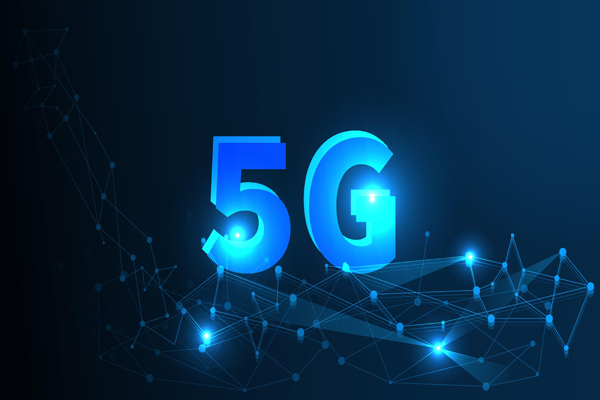5 ways 5G will revolutionize manufacturing

5 ways 5G will revolutionize manufacturing
Imagine a future where intelligent robots assemble products from multiple production lines by reconfiguring themselves on the factory floor. Security drones handle tedious tasks, from watching for intruders to confirming employee parking. Self-driving cars can transport parts not just between buildings, but across the country. Factory inspections can be done thousands of miles away.

Just a few years ago, these were impossible dreams of science fiction. But with the advent of 5G connectivity, combined with advances in artificial intelligence (AI) and cloud computing, those dreams are becoming more and more achievable for today's manufacturing companies.
The hype is intense. With data transfer speeds expected to be 25 times faster than current 4G networks, and with near-zero latency, 5G appears to offer endless opportunities for enhanced connectivity and digitization—both within factories and at every step along the value chain.
But which potential applications should manufacturers focus on? Five of them show particularly strong potential for improving factory productivity:
- Cloud Control of Machines – For decades, factory automation has relied on programmable logic controllers (PLCs) physically installed on (or very close to) the machines they control, then hardwired into computer networks to ensure Perform precise, reliable control of conditions. If 5G consistently delivers on its performance promises, PLCs could be virtualized in the cloud, enabling real-time wireless control of machines at a fraction of the current cost.
- Augmented Reality – Factory workers are no strangers to performing complex maintenance and control tasks, often guided by paper manuals, videos or, in some cases, standard operating procedures (SOPs) in augmented reality. However, due to bandwidth constraints, instructions transmitted over 4G networks may be unreliable and may not deliver the desired level of quality without stuttering. 5G not only promises to stream high-quality instructions on the shop floor, but also offers stutter-free augmented reality that guides people step-by-step through each individual movement they need to make. This will allow shop floor workers to perform advanced tasks without waiting for specialized engineers or causing costly machine downtime. As a result, the best knowledge and job descriptions can be shared with all workers when they need them, building worker skills faster, safer and more effectively than ever before.
- Insightful AI Focuses on the Factory Floor - Cameras are already pervasive in modern factories to monitor processes and safety. However, their use is limited to critical applications and often requires staff to monitor the video feed. 5G will allow real-time streaming of data to the cloud and use real-time video analytics. For example, security cameras can see disturbances, identify if there is an imminent threat or danger, and dispatch drones or alert crews to investigate. Alternatively, the same security camera can provide a more efficient mechanism for measuring cycle times and monitoring process deviations.
- High-velocity decision-making—the best-run factories rely on vast pools of data to make decisions—and delays are inevitable as data is collected, cleaned, and analyzed. 5G speeds up decision cycle times, allowing massive amounts of data to be ingested, processed and acted upon in near real time. In several heavy industries, for example, manufacturers have been able to sell excess energy back to the grid when machines are not running and at favorable prices.
- Internet of Things on the Shop Floor – Adding sensors to multiple machines means factories are creating more data than ever before. Transmission over a wired network is costly to scale, and Wi-Fi networks can quickly become congested—as anyone who has tried connecting to a public Wi-Fi network can attest. 5G has the ability to support high connection density of tens of thousands of endpoints, thus truly realizing the large-scale use of industrial data.
These technologies are still in early testing stages, but the pilots conducted so far are encouraging. In the long run, one of the most interesting impacts may be on the humans who work with 5G. Far from creating a lights-free, factory-less world, industrial 5G seems more likely to free people from tasks previously considered dirty, dull and dangerous. Instead, attention will shift to capturing the value of the massive data collection that 5G will enable — something that 4G cannot reliably and seamlessly support at scale.